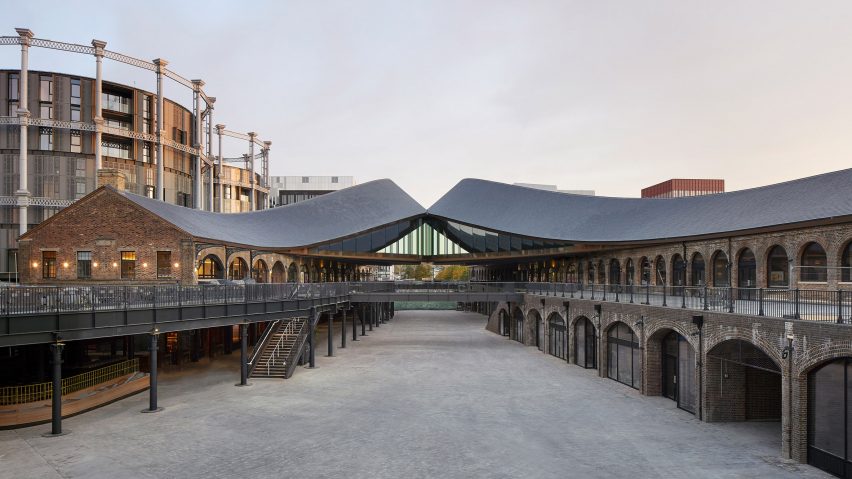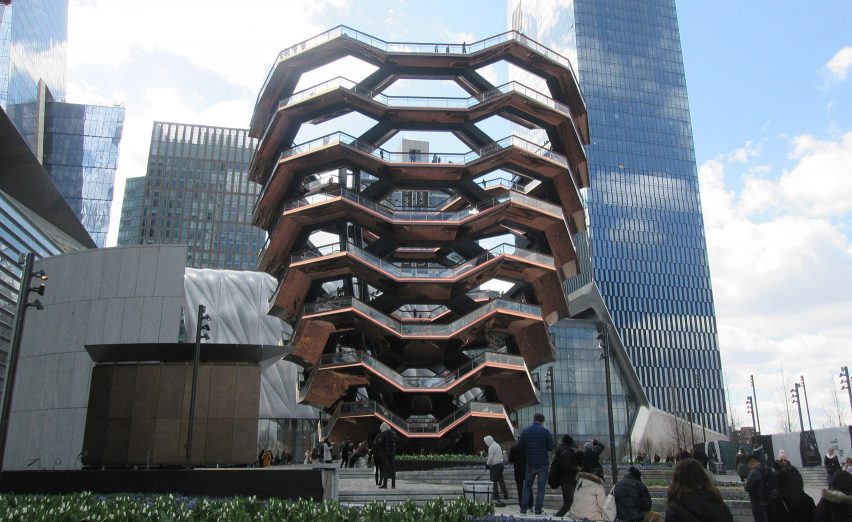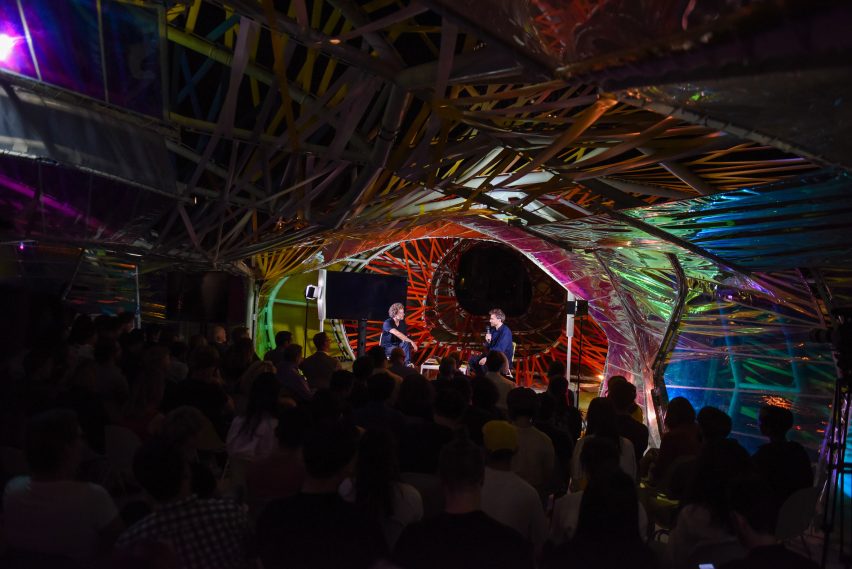"We're not telling people what to do" says Thomas Heatherwick
Thomas Heatherwick explains his studio's "human-centred" approach to the design of public spaces in this filmed talk hosted by Dezeen and Second Home in Los Angeles.
The British designer, whose studio designed the Coal Drops Yard shopping district in London and the Vessel centrepiece at Hudson Yards in New York, told Dezeen founder and editor-in-chief Marcus Fairs that his projects are open to users' interpretations.
"We're trying not to tell people what they're supposed to do," he said. "We're just making platforms."
"We prioritise projects that are publicly accessible and are interested in the human-centred dimension," he continued.

The talk, which took place in Los Angeles to coincide with the launch of co-working brand Second Home's Hollywood location, focussed on the design of cities in the digital age, and the way in which Heatherwick's designs counter the rise of the digital realm with "hyper physical" spaces.
The conversation touched on the importance of collaboration at Heatherwick Studios and the problems posed by abstract briefs in architectural education, as well as criticism of the designer's involvement in the controversial Hudson Yards development.

When pressed on his working processes and how he expresses his ideas, Heatherwick was quick to respond: "They're not my ideas, we work as a team."
According to Heatherwick, his studio's projects emerge from a collaborative process between him and his 200 employees rather than being dictated by himself.
"I have a strong sense that design is between you," he asserted. "You're all prodding and pulling and squishing that up, and growing that and nurturing it into a real project."
The designer expressed frustration at the abstract briefs given to architecture students in schools, asserting that the focus on fantastical situations and hypothetical futures detracts from the real challenges that architects can currently address.
"The real world's really exciting," he said. "The potential in the real world just in front of us, just across the road there, is boundless. We don't need to create weird, abstract, creative briefs to engage with because the real world's exciting enough."

Heatherwick also responded to criticism of Hudson Yards, a development in Midtown Manhattan for which Heatherwick Studios designed the huge Vessel structure.
"It's fine to not like it," he said. "But the thing that should be appreciated is the ambition of people to say 'yes' to making ideas really happen."

The conversation took place in the Second Home Serpentine Pavilion, a plastic-wrapped structure designed by Spanish architecture studio SelgasCano, which was originally designed as the 2015 instalment of the Serpentine Pavilion in London.
Second Home collaborated with the Natural History Museums of Los Angeles County (NHMLAC) to move the colourful structure to city's La Brea Tar Pits, where it will be used to host free public talks, film screenings, and other events up until 24 November.
Second Home bought and relocated the structure to celebrate the opening of its new Hollywood outpost, which has also been designed by SelgasCano.